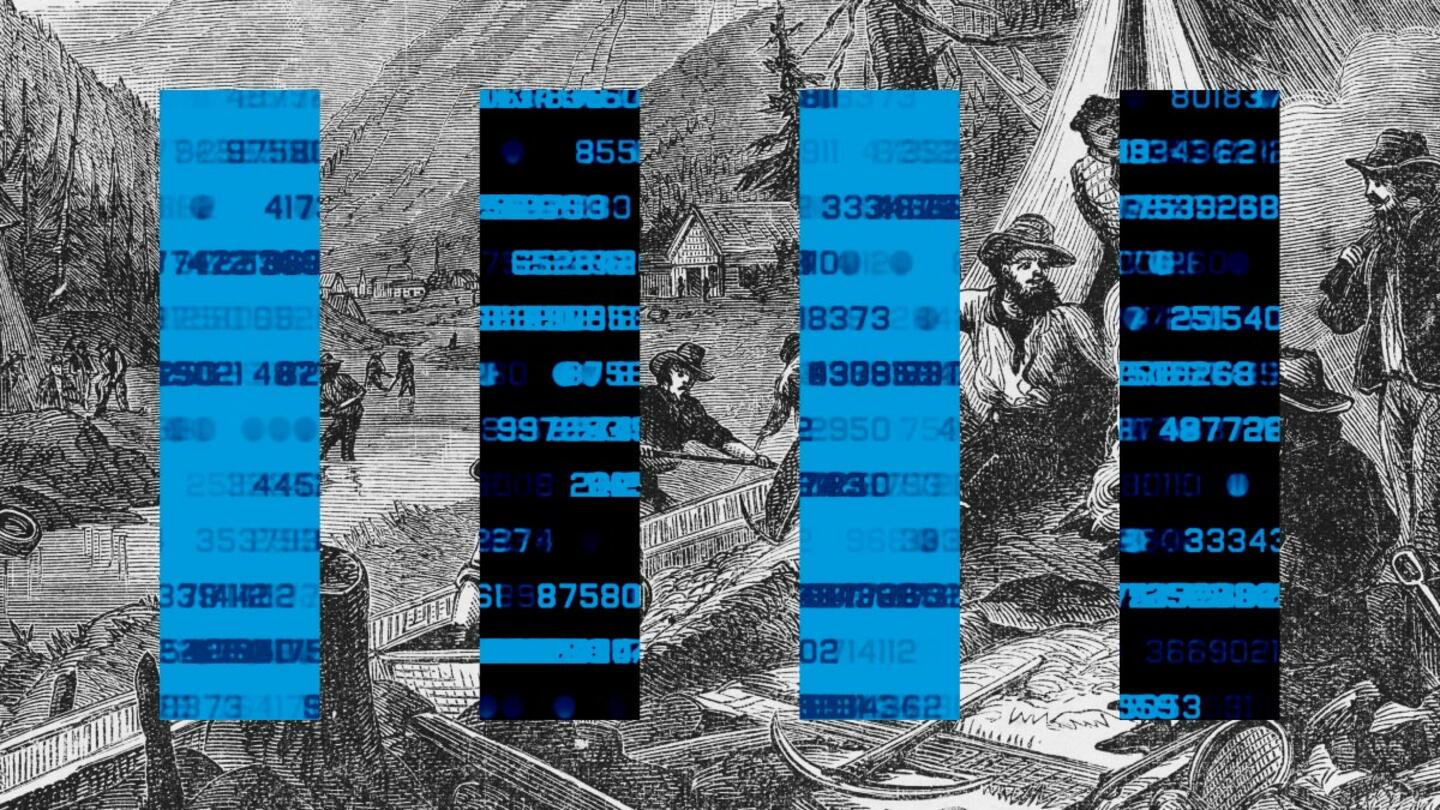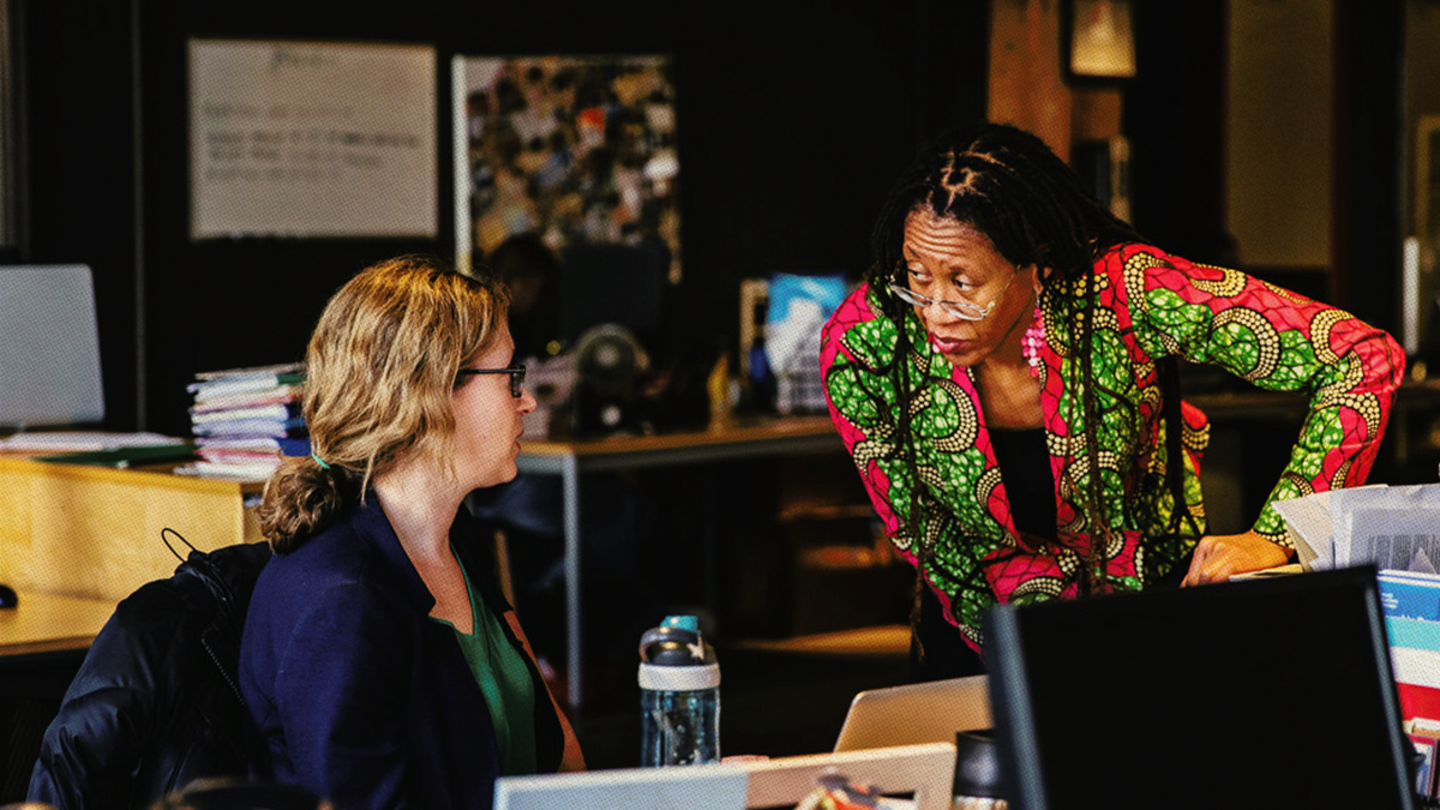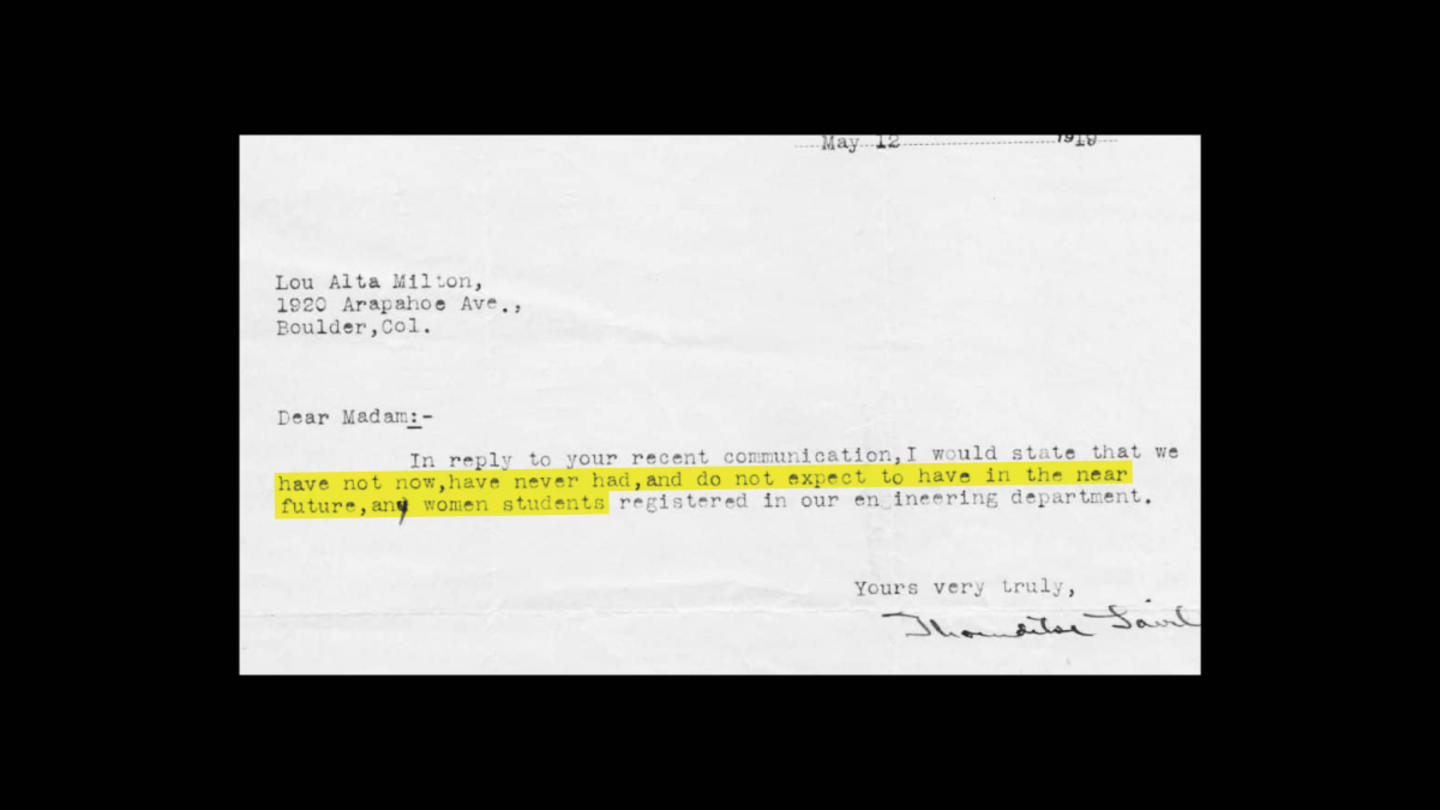In the summer of 2021, Julieta Moradei sat down at a San Francisco coffee shop to share ideas and experiences with other women who were also working in construction tech, a lucrative and growing field. All of them were excited about working in the field they loved, but there were only five of them at a table for 10. The empty seats launched an idea.
“We were joking, ‘Okay, this time next year, we want to make sure that at least we could fill the table,’” Moradei said.
Investment in construction technology — a field that focuses on developing software, programs, and tools to design buildings more efficiently — reached $50 billion in 2022, an 85% increase since 2019. But like other tech-focused industries, construction technology is mostly male. That may suit the needs of the field — or it could leave unexplored the possible improvements women would bring.
Moradei and her peers were all too familiar with the many factors that have resulted in fewer women entering the industry.
“When I entered the venture capital space, I was already used to having no women in construction and engineering,” Moradei said. “On top of that, it’s a very nontransparent industry. Many of these conversations happen behind closed doors when it comes to big decision-making for investments, and a lot of it is based on past relationships. … This leads to a heavy index of underfunded female founders and emerging fund managers — but what if we could really grow an ecosystem of women founders, investors, and adopters to shift this behavior?”
Moradei was eager to make the field more accessible and open. She hoped to encourage more women with skills and talent to explore the fulfilling job opportunities she had experienced. She knew firsthand how rewarding working in construction tech could be and wanted other women to have the opportunity to discover the same.
“What’s really exciting is that now there is a rise in robotics and technology as a whole,” she said. “We’re seeing a rise in off-site construction methods such as 3D printing, prefabrication, modular.” With these advances come opportunities to “shape a different type of job site, where you’re not necessarily hitting a hammer, but you might be surveying a robotic arm and assuring it is functioning. This allows skilled labor to wear a very different hat.”
That first conversation led Moradei to co-launch Women in Construction Tech, a community that provides career resources, networking opportunities, and corporate connections focused on recruiting women to join the construction tech industry.
“I read a stat recently that 95% of people hate their jobs,” Moradei said. “It’s a privilege to love your job. I don’t think everyone has that opportunity, but what I find really disheartening is when you think you should be stuck in a super linear career path. For structural engineering, you have to do your undergrad, your master’s, and your multiple professional engineering accreditations for licensure. You feel pigeonholed, and there are so many other opportunities you could do in our space.”
Examining the gender makeup of a field like construction tech provides an opportunity to consider two central components that can make or break a workplace: how many opportunities underrepresented groups are given to contribute their skills and how overly strict pathways into the industry might be limiting talent.
This isn’t about trying to fill a gender gap. Women in ConTech provides a new pathway for needed skilled labor into the industry that has traditionally been ignored. It is thinking differently about career pathways as a whole. The organization focuses on ensuring employees are fulfilled and empowered every step of the way — and the workforce as a whole is stronger for it.
What the tech industry is missing
Encouraging more women to enter the construction tech industry isn’t about filling a quota. It’s a way for leaders to think more intentionally about experiences and skillsets. Gender is just one of many kinds of experiences. A company that combines different personalities and working styles makes for a workforce in which employees complement and strengthen each other.
According to the World Bank, companies that hire more women experience as much as a 40% increase in productivity — for men and women alike. According to the International Labor Organization, they can also gain a 63% chance of increasing profitability and productivity.
Moradei believes holistic and emotionally intelligent working styles can support and bolster people who are more single-focused and logistical. While these traits are not automatically true of any gender, ensuring that no one misses an opportunity for their potential raises everyone’s boat, she explained.
“Having women in leadership and management positions allows us to diversify our ability to strategize, plan, and execute,” said Moradei. “What I’ve noticed firsthand is that a female team is able to think more holistically.”
Moradei referenced Patrick Lencioni’s Six Types of Working Genius framework to illustrate the many different working styles employees can have, all of which add unique value and can pair together to collectively strengthen a project. An array of personalities can complement and balance each other if a workplace provides opportunities for a diversity of experience and thought to join their talent pool.
“If you have two people that have the same [working styles], you want to make sure you complement it with people that have the opposite,” Moradei said. She added that some of her team members, many of whom are women, are very project management-oriented. “They really know how to empower others to get tasks done,” she explained.
She believes her company is ultimately made much stronger by first providing an environment “where women are really able to thrive, and then when there are gaps, men are able to take on those roles too. And then the whole team is thriving.”
Creating this diversity of skills is particularly critical for the technology industry, which is currently experiencing a labor shortage and rapid growth.
“There's an 8-million-person labor shortage,” Moradei said. “We're not tapping into half of the population, which is female.” As the world of construction technology shifts from traditional physical tools like welding machines to technological advances like robotics, workers “have to wear very different hats. So we’re seeing more women than ever entering the space.”
Sign up for Stand Together's Rethinking Work & Learning newsletter to get the latest stories, ideas, and trends on the future of employment.
How to knock down the barriers keeping your workforce from growing
The issue of gender representation in the tech world has important takeaways for how employers in nearly any industry can solve labor shortages and strengthen their workforce with broader and more creative thinking about employee roles and missions.
Moradei laid out two key steps that were transformational for her company, which other leaders can also emulate.
First, bring in workers from other industries who have expertise in skills outside of yours. According to Moradei, it may not be intuitive to hire skilled workers who don’t specialize in your field — but you may be overlooking ways that their background can offer valuable insights and new ways of thinking. For instance, she is partnering with experts who use artificial intelligence to close immense hiring gaps through recruiting platforms in an effort to transfer this approach to construction tech and close the labor shortage gap.
“I want to bring in entrepreneurs and founders from other industries that have focused on labor shortages or similar resource challenges,” Moradei said. “It doesn’t have to be construction, just anything related to hiring resources and how we can take lessons learned from other industries and bring it to construction.”
The second step, Moradei said, is to focus on community and fostering long-term relationships. At Women in ConTech, Moradei has focused on how to empower women with opportunities to grow, explore interests, and gain new skills. The organization's program facilitates mentorships, not just networking, as well as an environment where women can continually pursue greater fulfillment in their work.
“Our goal in all of this is to form deep relationships among women in our industry, not just connections,” she said. “We don't want to just go to conferences and hand out business cards. We want to form deep, meaningful relationships where women feel empowered to launch a startup or move into the world of investing with this opportunistic timing in the market.”
While Moradei is focusing on women, other employers can apply the same benefits to whatever groups they feel need the most support in their field. For employers who take the time to reflect and think purposefully about their hiring and retention in this way, the end result is a workforce strengthened by a greater diversity of experience and talent, and employees motivated to pursue their highest level of fulfillment.
Moradei remembered one woman in particular who was empowered with the resources and support she needed to pursue a new and exciting career change.
“She was working at a construction firm for 10+ years,” Moradei said. “She had this idea that she wanted to pursue for a long time because she was identifying pain points herself. But she had no idea how to start a startup from scratch. What does that even look like? How do you find your co-founders? How do you find investors? … She fully made the jump after a few months of being part of Women in Construction Tech. For so long, she just never had that community she could talk to about these ideas.”
As the tech world expands, labor gaps widen. That could be an opportunity.
Moradei believes that despite the challenges a labor shortage presents, it’s still an exciting time. Labor gaps can ultimately provide windows for employers to rethink and redesign their practices with increased focus on expanding diversity of thought, experience, and talent.
"We're at the very early innings of a technology revolution in the world of construction,” she said. “For women who are … passionate but don’t feel empowered, it’s a scarcity mindset. You don’t know what else you could do with your background. … [But] you have access to all these other paths. You can have exposure to many other things.”
Less than two years after its launch, Women in ConTech has already scaled internationally, with local chapters across the United States, Mexico, South America, Europe, and Asia. Moradei believes that bringing in leaders from across the world can open conversations that will only further expand the possibilities for new ways of thinking, working, and collaborating together in construction technology.
Ultimately, however, the organization’s work spreads far beyond the tech world. It demonstrates how employers in any industry can use their own resources to fill labor shortages and build a more fulfilled and driven workforce along the way.
“Our careers are long, and we have the opportunity of creating unique and different paths along them,” Moradei said. “What I’m really excited by are these stories where women say, ‘I’m happy in what I’m doing every single day. And I’m able to find this new path and bring in my unique skill set, my zone of genius to that.’”
***
Women in Construction Tech is supported by Stand Together, which partners with changemakers who are tackling the root causes of America’s biggest problems.
Learn more about Stand Together’s efforts to transform the future of work and explore ways you can partner with us.

Why AI may help more people achieve the American Dream.

Data centers are at the forefront of the ‘new economy.’ But what exactly are they?

Here’s how to bridge the disconnect between employers and employees.

Lessons learned from Colorado.
